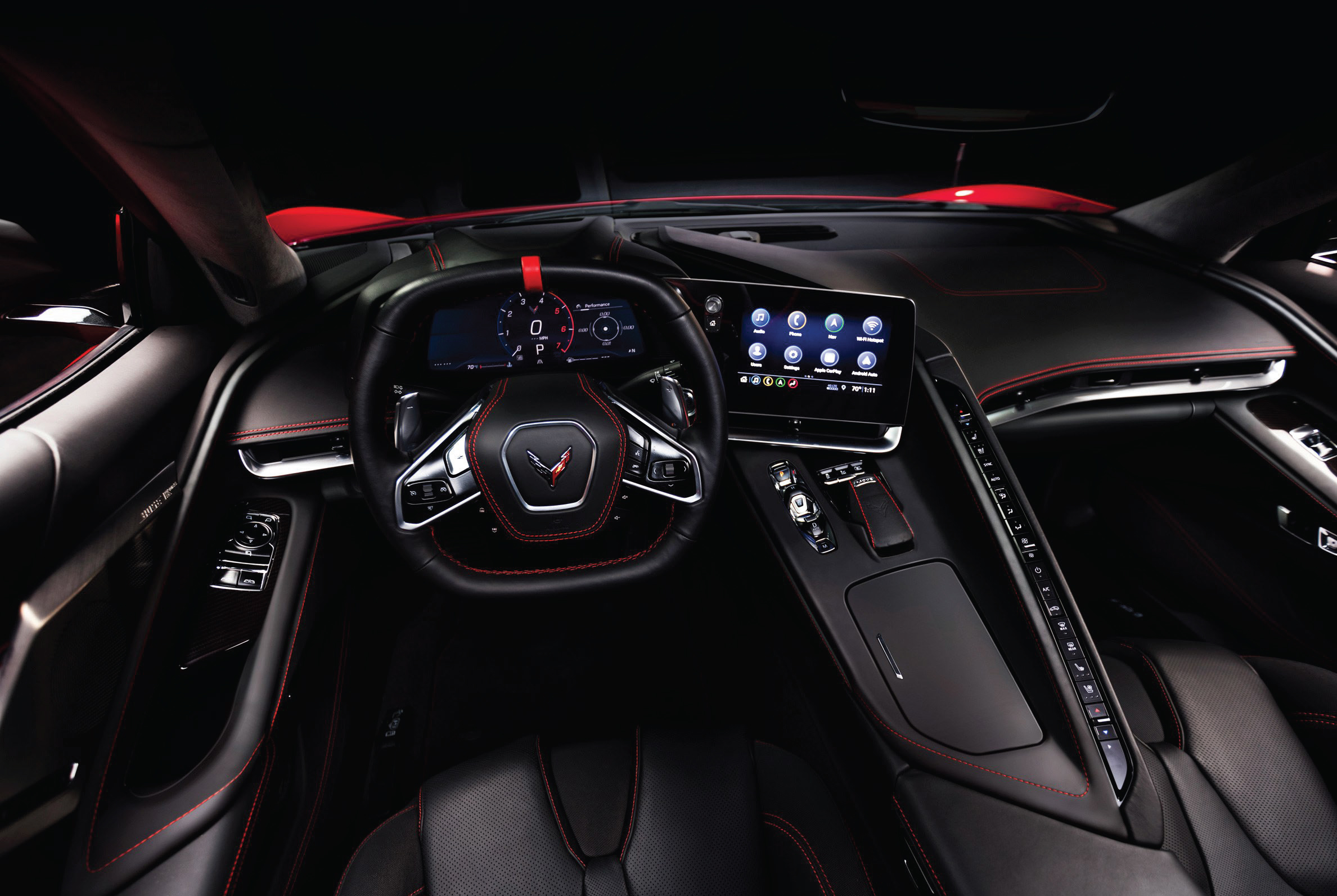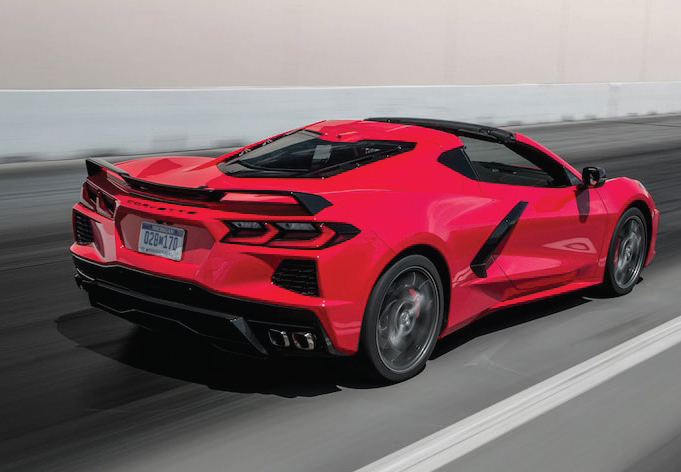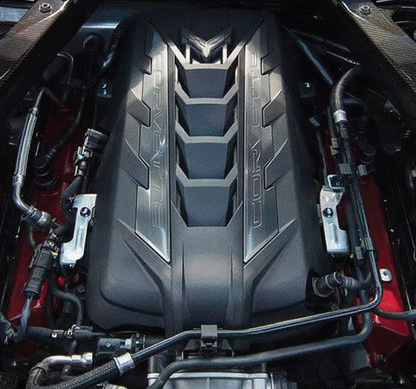BY ALEX JACKSON
The presumption that the new mid-engined 2020 Chevrolet Corvette would be a breakthrough, a revelation, and a revolution has followed it like a moon shadow. The moment that rumors surfaced that the engine in the next C8-generation Corvette might move behind the seats, the anticipation began. Now it’s here. And it does look more like a Ferrari than a Corvette, with the same cabin-forward proportions as every hyperfast, megadollar exotic on the market. So, has Chevrolet built a supercar for the masses—an American Ferrari—or simply a better Corvette?

Owned by Los Angeles based jewelry designer Amanda Keidan, Casa Delphine opened its doors in April 2019 and has already welcomed guests from around the globe. “Casa Delphine is a modern and luxurious colonial Mexican home. It was originally built as a home, though its layout lends itself perfectly as a hotel,” says Keidan, “My job was to create an environment that feels calming and that showcases that original work.”
The company wanted to appeal to younger buyers who once tacked posters of Lamborghini Countachs to their bedroom walls. But the Corvette, once again called the Stingray, was designed to occupy the same place in the market as before. Some 50 percent of Corvette buyers purchase the entry-level model, which is why a base C8 goes for just $59,995—hundreds of thousands less than the McLarens, Ferraris, and Lamborghinis it resembles. The C8 equipped with the $5000 track-capable Z51 Performance package and optional FE4 magnetorheological dampers (an additional $1895), is the hottest version available at launch. This is the framework within which to judge the new C8.
Critiquing the C8 Stingray starts with examining its performance, which definitely lives up to expectations. With 60.6 percent of its mass over the rear tires—the C7 Stingray had a roughly 50/50 front-to-rear weight distribution—the C8 is ferocious off the line. With the dual-mode performance exhaust that’s included in the Z51 package, the 6.2-liter LT2 V-8 in the C8’s tail makes 495 horsepower (base cars without that exhaust make 490). That’s up 35 ponies from the C7 Z51’s engine, which keeps the pounds-per-horsepower ratios of the two cars virtually equal. Aided by its quick-shifting eight-speed dual-clutch automatic—the only transmission available—and a well-calibrated launch-control system, the C8 rips off zero-to-60-mph runs in 2.8 seconds.

While the C8’s performance places it within the bounds of the supercar class, character matters as much as capability. With a viselike grip on the pavement and the haughty assuredness of a car born to the task, the C8 is capable of astounding velocities.
There are six driving modes, and the FE4 damper package also includes the Performance Traction Management system for fine-tuning the car’s stability control for track use. Switch into any of the more aggressive settings with the awkward-to-use dial on the center console, punch the push-button shifter into manual mode, and hang on. The steering cuts like a race car’s, and the cornering limits are virtually out of reach on the street—though steering feel and feedback aren’t as communicative as those from a Porsche 911 or a McLaren 720S. Boiling out of corners on full throttle, the big V-8 thunders like a NASCAR engine, and the dual-clutch automatic delivers crisp shifts when you pull the paddles on the back of the steering wheel.
Bimodal, everyday usability has long been a Corvette trait, and the C8 continues that tradition. In Tour mode, it transmogrifies into a laid-back daily driver, with a ride smoother than many sports sedan’s, steering lighter than a Malibu’s, and an engine note that’s barely a murmur. The transmission eases through its eight gears unnoticed, though it can be a bit lazy to downshift if you stab the throttle. Extensive acoustic insulation has made the C8 not only quieter by three decibels at 70 mph than the C7, but just plain quiet.

There are just a few reservations about the new Stingray’s interior. There are three seat options in the C8: GT1, GT2 (included in the 3LT trim), and the more aggressive Competition Sport buckets. The GT2 chairs are soft in the right places yet wonderfully supportive for amped-up cornering. This is a car you can drive anytime, anywhere—including clear across the country or just to your local grocery store.
The C8 with the $11,950 3LT package, boasts supple, tautly sewn leather on most of its interior surfaces, plus extras such as the $1500 carbon-fiber trim. You sit farther forward compared with the seating position in the C7, though the view over the deep instrument panel isn’t as panoramic as it is in some other mid-engine cars. The odd squared-off steering wheel is, surprisingly, as easy to use as a circular one, and it provides a clear view of the programmable digital gauge cluster.
The steering-column stalks are a bit of a reach, and the glare on the rear glass sometimes hides what’s behind you. The electronic rearview mirror camera that’s standard on 2LT and 3LT trims solves this problem by providing an unobstructed view of anything behind you.
The C8 is by far the most impressive Corvette ever. For a base car with the Z51 package and FE4 dampers, you’re looking at only $66,890. It’s a known secret that several hotter C8s will soon follow, powered by high-revving, DOHC 32-valve flat-plane- crank V-8s starting at 600-plus horsepower and ranging up to a hybrid with nearly 1000 ponies. Those versions likely will deliver all the snarl anyone could want. As for now, the new C8 isn’t just a better Corvette, but a supercar for the rest of us.
